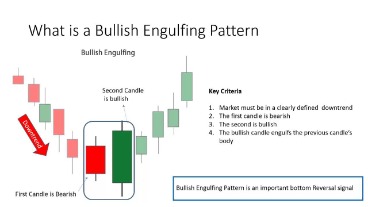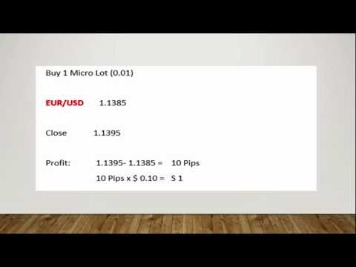
In Chart 3 above (doji B), the doji moved in the opposite direction from the movement shown in Chart 2. And there won’t be any meaningful patterns for you to trade in this market condition. A Four-Price Doji occurs when the open, close, high and low prices are the same.
How To Technically Analyze A Stock – Forbes
How To Technically Analyze A Stock.
Posted: Tue, 29 Aug 2023 07:00:00 GMT [source]
A perfect doji is a candle whose closing and opening price are exactly the same, without any flexibility. The5%ers let you trade the company’s capital, You get to take 50% of the profit, we cover the losses. Get your trading evaluated and become a Forex funded account trader. Following the dragonfly, the price proceeds higher on the following candle, confirming the price is moving back to the upside.
The future direction of the trend is uncertain as indicated by this Doji pattern. A Dragonfly Doji shows the open and close price at the same level as the high price. In addition to the four Doji candles in this graphic, there is also one more, indicated by only a straight horizontal line with no wick. The blue arrows point to the open and close prices in the chart below, while the purple arrows indicate the high and low prices.
History of Doji Candles
A doji could be formed by prices moving lower first and then higher second. To learn more about the new trading strategy and doji formation that lets you profit in bull and bear markets so you grow your wealth steadily even during a recession. Though many people search about bullish candle patterns, here this article helps you to know more about the Doji Candlestick Pattern and how to come across the trading market. In the trading opportunities, most of them look for a higher frame than the lower frame.

This formation can occur at the end of a downtrend, as well in the closing stages of the uptrend. This means a doji can be classified as both a reversal and a continuation pattern, as it signals there is no firm outcome of who has control over the price action. This article explains doji candlestick patterns and provides you with five examples.
Other Doji Variations
The Doji candlestick often occurs during consolidation after the security move has been significantly higher or lower. A doji is a pattern of indecision but can be inclined to bullishness and bearishness. A longer lower tail means stronger bulls and a longer upper tail means stronger bears. A complete doji is a candlestick whose opening and closing prices are the same. However, do not be very strict accept a candle as a doji if there is a few cents or points variation.
Whatever may be the candlestick pattern you must know about the exact definition and what is the meaning behind it. As part of technical analysis for traders, it is important to understand and identify trends on trading charts for currencies, stocks, futures, or bonds. In addition to understanding and identifying trends, traders need to know different chart patterns https://g-markets.net/ and what they mean. At the point where the Long-Legged Doji occurs (see chart below), it is evident that the price has retraced a bit after a fairly strong move to the downside. If the Doji represents the top of the retracement (which we do not know at the time of its forming) a trader could then interpret the indecision and potential change of direction.
- Depending on past price action, this reversal could be to the downside or the upside.
- The formation of a doji pattern may indicate a sense of indecisiveness in the market where neither buyers or sellers are able to gain the upper hand.
- The below price chart for US SPX 500 index shows a bearish star doji marked the start of a short-term down move, following a rally in price.
- So, the second doji might be a sign of the bulls’ power and needs to be confirmed.
However, the morning rally did not last long before the bears took over. From mid-morning until late-afternoon, General Electric sold off, but by the end of the day, bulls pushed GE back to the opening price of the day. The first doji outlined on Chart 1 in the previous section was a high-low doji, where prices made the highs for the day first, and the lows for the day second. After a long downtrend, like the one shown in Chart 1 above of General Electric stock, reducing one’s position size or exiting completely could be an intelligent move. In the next section, you’ll another type of Doji that signals the market is about to bottom out. The trade must make use of other technical analysis techniques to determine entry and exit points for trades.
How to trade the Dragonfly Doji in a trending market
If a bearish candlestick is formed below the Doji’s low (and it has a lower high than the Doji’s high), then traders consider it to be a sell signal. A strong downtrend can be followed by a Doji formation, to be followed by a bullish candlestick above the Doji high. Generally, doji candlestick patterns mean indecision, tiredness, and caution.
A Long Legged Doji is a standard doji candlestick that occurs when the open and close is the same price but, with a long upper and lower wick (relative to the earlier candles). Estimating the potential reward of a doji-informed trade also can be difficult because candlestick patterns don’t typically provide price targets. Other techniques, such as other candlestick patterns, indicators, or strategies, are required to exit the trade, when and if profitable. Every candlestick pattern has four sets of data that help to define its shape.
How is a Doji candlestick Pattern formed?
A doji is not as significant if the market is not clearly trending, as non-trending markets are inherently indicative of indecision. There are different types of doji candlesticks pattern available and be aware of them. Here you can learn how to recognize it and how to convert this into profitable trading opportunities using this pattern.
The opening and closing prices are not the same, as a little bit of flexibility is important, because this is the Forex market. As with stocks and other securities, the formation of a doji candlestick pattern can signal investor indecision about a cryptocurrency asset. A doji is a pattern that occurs in a session of trading where the opening and closing price of an asset are almost equal. They are often interpreted as components of larger patterns and do not occur very often under normal circumstances.
This is a very bullish candle as it shows that buyers were in control of the entire session. It usually becomes the first part of a bullish continuation or a bullish reversal pattern. Let’s take a look at each type of candlestick and what they mean in terms of price action. Spinning tops appear similarly to doji, where the open and close are relatively close to one another, but with larger bodies.
Classic Doji Candlestick Pattern
Both indicate possible trend reversals but must be confirmed by the candle that follows. Despite the dragonfly doji being the standard doji candlestick, you’ll rarely get an ideal Dragonfly Doji where the price closes exactly where it opened. In Dragonfly Doji the candle has a lower wick (with the same open and close) this means rejection of lower prices. When the market opens buyers push the price down and then rise and closes the buyers pushed the price higher it is a sign of strain and don’t choose Dragonfly Doji.

A Doji candle’s wicks are either exceedingly little or nonexistent. This pattern might appear at the bottom of a downturn or the top of an upswing. Any information contained in this site’s articles is based on the authors’ personal opinion.
Flag Pattern: Types, How to Trade & Examples
This Doji type also shows a great amount of indecision among buyers and sellers in the market. A Doji is used to illustrate market indecision and serves as a signal for a reversal in a market that is either upward or downward trending. In the below chart of Mayur Uniquoters Ltd, we can see that at the end of the uptrend, a Doji candle is formed, indicating that the ongoing trend has become certain. The Long-Legged Doji is very similar to the Neutral Doji, but with a longer wick on either side of the open/close price. The Long-Legged Doji indicates that there was more volatility between the high and low prices in the trading session than the neutral Doji.
